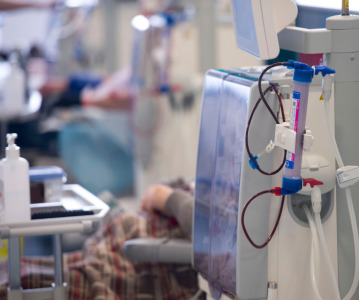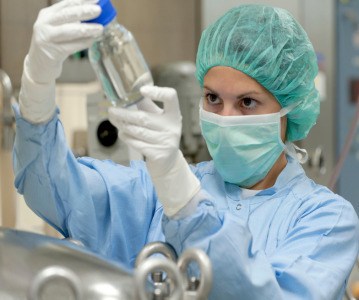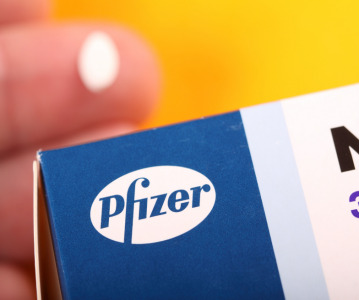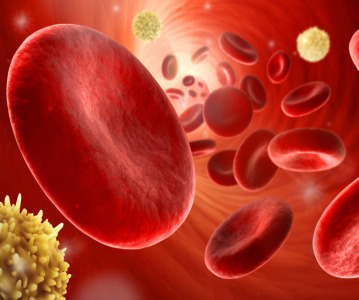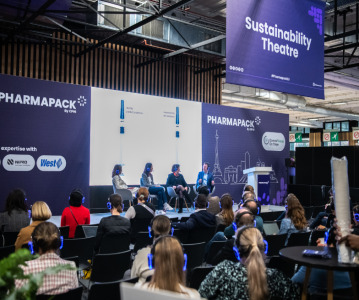COVID-19, patient needs and sustainability driving drug delivery tech innovation

Innovation is the cornerstone of the drug delivery technology sector; efforts to make therapies more convenient for patients, reduce side effects and differentiate products from the competition have always made the delivery sector a hotbed of new ideas.
The level of innovation in drug delivery technology has increased in the last year. The pandemic has forced the drug delivery industry to find innovative ways of sourcing materials and maintaining supply chains but it is not the only dynamic. Growth of the combination drug sector and renewed demands for non-syringe based administration methods for large molecule drugs has prompted tech firms to invest in R&D.
The drug delivery industry has, like the wider pharmaceutical sector, been impacted by COVID-19. The industry response to the pandemic was to scramble to create vaccines to parts of the SAR-CoV-2 virus, the causative agent of COVID-19.
While many of these efforts proved successful with millions now vaccinated worldwide, the focus on vaccine R&D and then production placed a huge strain on product supply chains, including the syringes used to administer the vaccines. For example, in May the Wall Street Journal reported COVID-19 vaccines were being wasted in various US states because the federal Government was not supplying enough syringes to deliver the jabs.
In parallel, there are also questions about the glass sector’s ability to manufacture enough supplies of the specialist materials syringe and vial makers need to maintain production rates.
But there have also been some positives for the delivery technology industry. As well as developing vaccines, the drug industry has been busily checking to see if any products or candidate products can help people suffering with COVID-19.
These efforts – which are likely to continue for the next few years at least – are likely to increase drug industry demand for novel delivery systems (NDDS), according to a study published in February.
The authors wrote “Novel Drug Delivery Systems (NDDS) will be boon for the repurposing of drugs… NDDS will help to develop the improved delivery systems (dosage forms) of existing therapeutic agents and also explore the new insights to find out the void spaces for potential targeted delivery. Therefore, in these tough times, NDDS and nanotechnology can be a safeguard to humanity.”
A separate study suggested use of nanotechnology-based drug delivery systems would increase as a result of efforts to combat the pandemic. According to the authors, various vaccines and therapeutic drugs based on nanomedicine that are currently undergoing clinical trials “have presented the potential to become innovative alternatives for overcoming COVID-19.”
Others have argued the case for using transdermal drug delivery systems (TDDS), nebulizers or other aerosol-based methods as routes for the administration of SARS-CoV-2 vaccines and COVID-19 therapeutics.
Some efforts to combat the pandemic have focused on the immune response to SARS-CoV-2 rather than the virus itself. A study published in June suggested new delivery technologies could be used to administer immunomodulatory agents to reduce disease severity in hospitalized patients.
Formulations
Since the earliest days of the pharmaceutical industry, the vast majority of medicines have been formulated for oral delivery. As one recent study put it “oral delivery has been recognized as the most attractive method, mainly due to its potential for solid formulations with long shelf life, sustained delivery, ease of administration and intensified immune response.”
In recent years, innovation in oral drug delivery technologies and formulations has been driven by the need to improve the bioavailability of otherwise insoluble active pharmaceuticals ingredients (APIs).
In addition, the emergence of combination products has forced developers to find ways of ensuring the respective ingredients are evenly distributed or that they will be released in a controlled manner.
One notable example of a combination pill was AstraZeneca’s diabetes treatment Qtrilmet, which successfully combined metformin hydrochloride, saxagliptin, and dapagliflozin. The pill was approved in 2019 but later withdrawn by AstraZeneca for commercial reasons.
Other combo-pill developers have turned to more innovative formulation production methods like 3D printing.
Aprecia’s epilepsy drug Spritam is the highest profile example of a 3D printed medicine. The product only contains one API – levetiracetam – however, when the US Food and Drug Administration (FDA) approved it in 2017 it noted the potential of 3D printing for combination drugs.
The agency wrote, “It may be possible to combine certain medications into one “polypill” using 3D designs and 3D printing processes, which would be especially useful for those who take multiple medications every day.”
In the years since, several studies have been published by groups using 3D printing to combine multiple APIs although, to date, no such products have been approved.
Skin deep
Demand for transdermal delivery systems has also increased markedly in recent years, primarily because the drug industry has sought to find ways of enhancing the bioavailability of poorly soluble APIs.
But there are other factors that make delivery through the skin an attractive option. According to a recent study, transdermal delivery also fits with demand for ‘patient-centric’ product formulations.
The authors wrote, “Transdermal drug delivery systems offer some advantages for patients, such as being less invasive some methods are entirely non-invasive, first-pass metabolism avoidance, ease of application and administration, no need for expert personnel, and the potential to reduce frequency of administration.
“Additionally, this technology has been used for the delivery of different varieties of drugs, both hydrophilic and hydrophobic compounds.”
They cite vesicles and analogues, various types of microneedle systems – including coated, hollow and dissolving - as well as ‘energy-driven’ methods as the most active areas of innovation in transdermal delivery.
The suggestion is in keeping with several other studies looking at the potential use of nanoscale microneedles to deliver candidate COVID-19 vaccines and therapies.
The comments about microneedles also fit with the World Economic Forum’s decision to include microneedles in its list of top ten emerging technologies for 2020.
Environmental impact
Growing concerns about the environmental impact of drug delivery technologies has also been a focus for sector R&D teams. Late last year, for example, Ypsomed launched what it claimed was the world’s first zero carbon emission autoinjector for pharmaceuticals.
Similarly, in 2018 the UK Government called for industry to promote greater use of inhalers that have lower levels of GWP refrigerants to help reduce fluorinated greenhouse gas emissions.
But emissions are not the only environmental challenge the drug delivery sector faces. In 2019 the European parliament agreed to ban a range of single-use plastics in products during 2021.
At present the new EU legislation does not apply to medical products – which are deemed vital – however, various analysts have predicted the drug industry’s reliance on single-use plastics is likely to come under greater scrutiny. As a result, efforts to find alternatives to plastic in both the delivery technology and drug packaging sectors have accelerated.
Connected delivery devices
Wireless connectivity is another major area of development for delivery technology researchers.
According to a recent report, the market for delivery devices that are able to administer medications and capture and transmit patient data is growing 46.7% a year and will be worth $4.07 billion by 2028.
The authors say “a rise in awareness about the adverse effects of non-adherence… increased adoption of IoT and the COVID-19 pandemic” is “increasing the demand for connected drug delivery devices as well as providing lucrative growth opportunities in the coming years.”
A similar view was outlined in a 2019 study, which suggested drug industry demand for connected drug delivery devices “are increasingly being developed to support patient supervision and counselling in home setting.”
The researchers cite features like dosing reminders, adherence trackers, tools for patient education, and patient diaries to collect patient-reported outcomes among the advantages.
However, the also injected a note of caution about the growth potential of the connected delivery device market, pointing out that the regulations covering patient data and privacy are still evolving.
“Key barriers to the broader adoption of connected devices include data privacy laws that may prevent data sharing with HCPs in some countries, as well as the need to demonstrate that the tools are consistently used and generate a high-quality and reproducible database.
Related News
-
News US FDA adds haemodialysis bloodlines to devices shortage list
On March 14, 2025, the US FDA published an open letter to healthcare providers citing continuing supply disruptions of haemodialysis bloodlines, an essential component of dialysis machines. -
News Women in Pharma: Manufacturing personal and team success
Our monthly Women in Pharma series highlights the influential lives and works of impactful women working across the pharmaceutical industry, and how the industry can work towards making the healthcare industry and workplace more equitable and inclusive... -
News Pfizer may shift production back to US under Trump pharma tariffs
At the 45th TD Cowen annual healthcare conference in Boston, USA, Pfizer CEO Albert Bourla outlined the potential for Pfizer to shift its overseas drug manufacturing back to the US as pharmaceutical industry players weigh their options against Presiden... -
News Experimental drug for managing aortic valve stenosis shows promise
The new small molecule drug ataciguat is garnering attention for its potential to manage aortic valve stenosis, which may prevent the need for surgery and significantly improve patient experience. -
News Women in Pharma: Connecting accessible pharma packaging to patients – a Pharmapack Special
Throughout our Women in Pharma series, we aim to highlight how CPHI events encourage discussions around diversity, equity, and inclusion initiatives in the pharmaceutical industry. -
News Vertex Pharmaceuticals stock jumps as FDA approves non-opioid painkiller
UK-based Vertex Pharmaceuticals saw their stock shares soar as the US FDA signed off on the non-opioid painkiller Journavx, also known as suzetrigine, for patients with moderate to severe acute pain, caused by surgery, accidents, or injuries. -
News Trump administration halts global supply of HIV, malaria, tuberculosis drugs
In various memos circulated to the United States Agency for International Development (USAID), the Trump administration has demanded contractors and partners to immediately stop work in supplying lifesaving drugs for HIV, malaria, and tuberculosis to c... -
News 2024 Drug Approvals: a lexicon of notable drugs and clinical trials
50 drugs received FDA approval in 2024. The centre for biologics evaluation and research also identified six new Orphan drug approvals as under Biologics License Applications (BLAs). The following list picks out key approvals from the list, and highlig...
Recently Visited
Position your company at the heart of the global Pharma industry with a CPHI Online membership
-
Your products and solutions visible to thousands of visitors within the largest Pharma marketplace
-
Generate high-quality, engaged leads for your business, all year round
-
Promote your business as the industry’s thought-leader by hosting your reports, brochures and videos within your profile
-
Your company’s profile boosted at all participating CPHI events
-
An easy-to-use platform with a detailed dashboard showing your leads and performance
